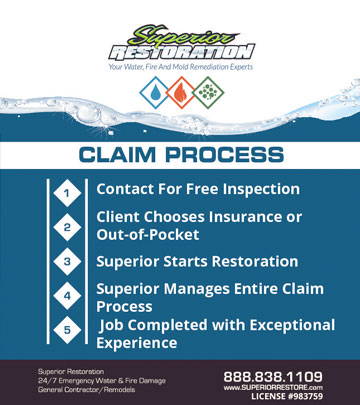Mold under laminate flooring can pose a significant problem for...
Read More
Menu






Our team’s top priority is to provide all of our customers with a remarkable experience – period. We achieve this by focusing on:
We don’t just offer exceptional experiences to our customers. We extend it to our employees, vendors, adjusters, and the local community through non-profit work.
So, don’t forget to check out our 5-star team. Choose us for an unforgettable experience that will exceed your expectations.





Mold under laminate flooring can pose a significant problem for...
Read MoreWater damage on carpets is a distressing situation that homeowners...
Read MoreWater damage is an all-too-familiar and distressing problem that can...
Read MoreGot smoke smell in your home? Dealing with the effect...
Read MoreAt Superior Restoration, we take pride in being the leading and most trusted restoration company in Murrieta. Don’t just take our word for it, check out our exceptional reviews and compare them to other companies to see why we are the best choice for your restoration needs. We understand that water damage can be a stressful and overwhelming experience, which is why we’re here to provide you with top-quality service and speedy response, 24/7. Whether you’re dealing with water damage in Murrieta or surrounding areas, our team of experts is fully equipped to handle any size job and deliver superior results.
Visit Restoration Industry Association for information on how restoration affects homes. http://www.restorationindustry.org/
Call us anytime for immediate assistance with water damage, extraction or cleanup. We will take care of you with the best level of service in the area and get the job done with top-of-the-line industry equipment.
We are open 24/7 for any type of emergency.
Regular office hours are Monday-Friday 8 am to 5 pm.